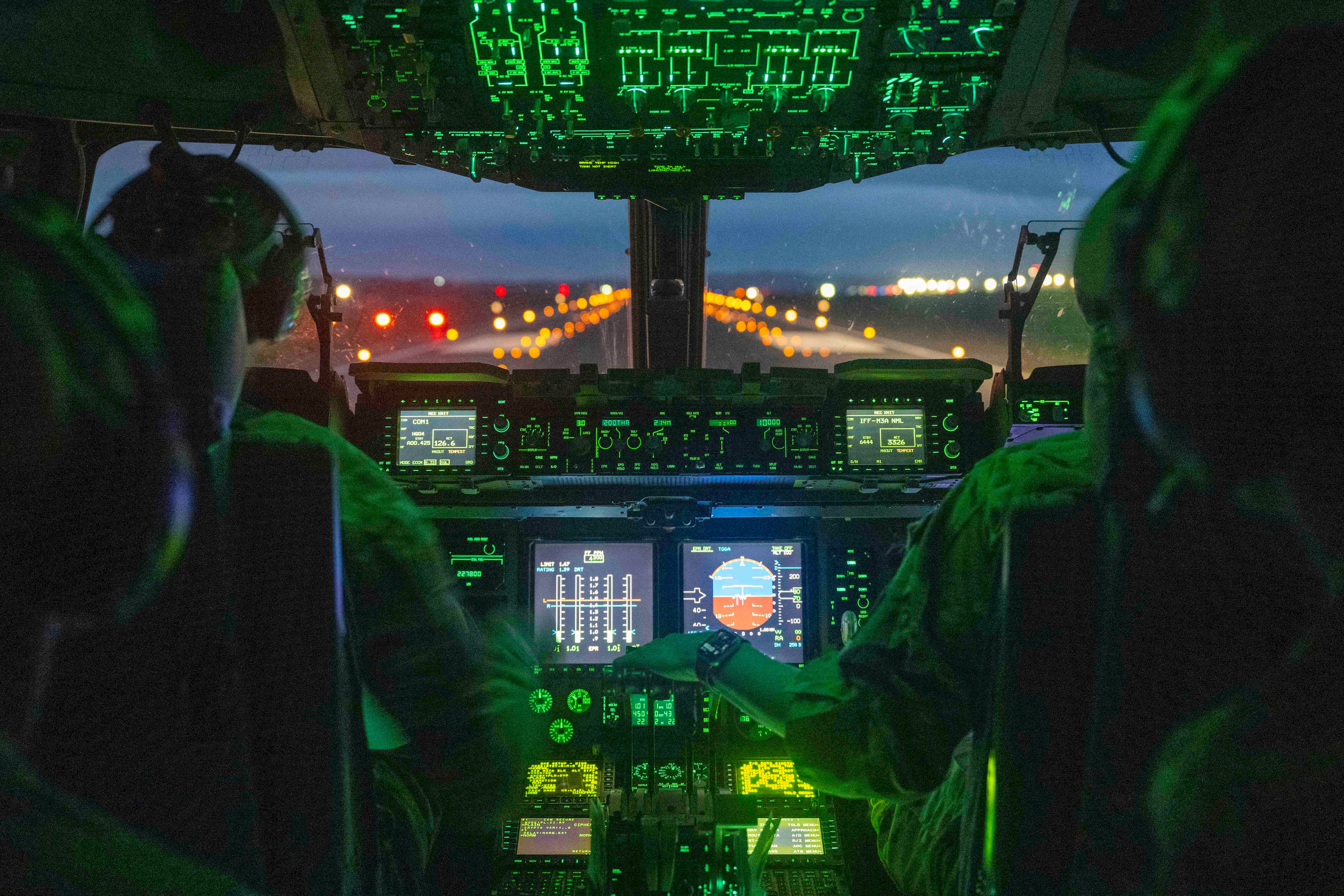Six bases will test the Air Force’s new approach to deployments in its latest effort to adapt to the challenges of modern warfare, the service said Wednesday.
New command teams are slated to arrive at installations across the U.S. this summer, as the Air Force launches so-called “air task forces” that it hopes will better prepare airmen for combat than in decades past.
Bases chosen to pilot the initiative include Davis-Monthan Air Force Base, Arizona; Scott AFB, Illinois; Joint Base San Antonio and Dyess AFB, Texas; Fairchild AFB, Washington; and Seymour Johnson AFB, North Carolina.
RELATED

The bases — whose squadrons span the breadth of many core Air Force missions, from fighters and bombers to airlifters and refueling tankers — will each receive about 50 airmen to run each task force, an Air Force official told reporters.
Task forces will train together over the next several months before starting to head overseas next year. The first three task forces will deploy in October 2025, including two to the Middle East and one to the Pacific. Another three groups will rotate in to replace those task forces in April 2026.
It’s a departure from the piecemeal approach that’s prevailed in the post-9/11 wars, during which the Air Force has scrambled to make as many troops available as possible amid an often unrelenting pace of operations. Airmen are often plucked from various bases and combined into combat units overseas, without first knowing or training alongside wingmen outside their own squadron.
“This is walking us back toward the model that we had during the Cold War, where we know each other, we train together, you’re building the team [in] peacetime in preparation for deployment,” the Air Force official said.
The Air Force has said it expects the task forces, led by colonels, to sit alongside existing wing commanders at each base. Air Force Chief of Staff Gen. David Allvin has handpicked each new commander based on their experience and ability to lead airmen through a fundamental shift, a service spokesperson said.
Each task force will include commanders and an executive staff to handle matters like personnel and logistics; aircrews and maintainers to run combat missions; and support squadrons to keep airfields running smoothly.
Smaller teams will number hundreds of airmen; larger ones may span thousands, the service said.
In the coming weeks, the Air Force will select which squadrons will come together to form the combat support units attached to each task force. Those airmen in jobs like civil engineering, communications and security forces would coalesce into a single team while deployed, the service said.
Because those support staff would no longer be siloed in different squadrons based on their jobs, the Air Force said, they’d be expected to take on a wider range of responsibilities as needed downrange. The Air Force has encouraged units to train as “multicapable airmen” who can chip in on protecting a base’s perimeter or moving cargo in addition to their main job.
Lessons learned from the air task force experiment will inform how the service adopts other pieces of its deployment overhaul. The task forces are eventually expected to give way to “deployable combat wings” that can be dispatched for missions overseas, separate from other wings whose job will be to keep their base running at home.
Right now, those functions typically fall to one host wing in charge of preparing for war as well as protecting and supporting its home station.
Col. Morgan Lohse, commander of the 4th Fighter Wing at Seymour Johnson, told airmen Monday that most won’t see a difference in their daily operations as the changes unfold.
“In some cases, your organization may report to a new leader, but the typical tasks will continue,” Lohse said in a release Monday. “The [deployed combat wing] will continue to generate and employ air power and prepare for deployments. The [air base wing] will continue to support the base and now have a new emphasis on preparing for and fighting through a contested environment at home.”
For months, Air Force leaders have previewed their plans to overhaul how airmen deploy around the world. Various exercises, like Mobility Guardian and Agile Flag, have explored iterations of the idea while officials continued to hash out the minutiae of how those changes might work.
The service got its first real-world taste of how better acquainted combat forces might function in the future as the Israel-Hamas war erupted in October.
An Air Force leadership team that had worked together before deploying to U.S. Central Command in the fall more easily reacted to the crisis because the trust they had built allowed them to move faster, the service official told reporters.
“Fast forward to April of this year, and pretty soon after this rotation of leaders deployed, the mass salvo of Iranian cruise missiles and attack drones occurred,” the official told reporters. “Many of those combat forces showed up that morning and executed that night to shoot down a bunch of those drones, but the leadership knew each other … and made a difference in how they were able to lead.”
An Air Force spokesperson declined to say which unit has helped pilot the new expeditionary model in the Middle East, citing security concerns.
Officials also hope the overhaul will make its teams more nimble and intuitive when competing for dominance with China, Russia and others whose military technologies could force the U.S. to move faster and with fewer resources on hand than in the war on terrorism.
“We need these changes now,” Air Force Secretary Frank Kendall said. “We are out of time to reoptimize our forces to meet the strategic challenges.”
Rachel Cohen is the editor of Air Force Times. She joined the publication as its senior reporter in March 2021. Her work has appeared in the Washington Post, the Frederick News-Post (Md.), Air and Space Forces Magazine, Inside Defense, Inside Health Policy and elsewhere.





